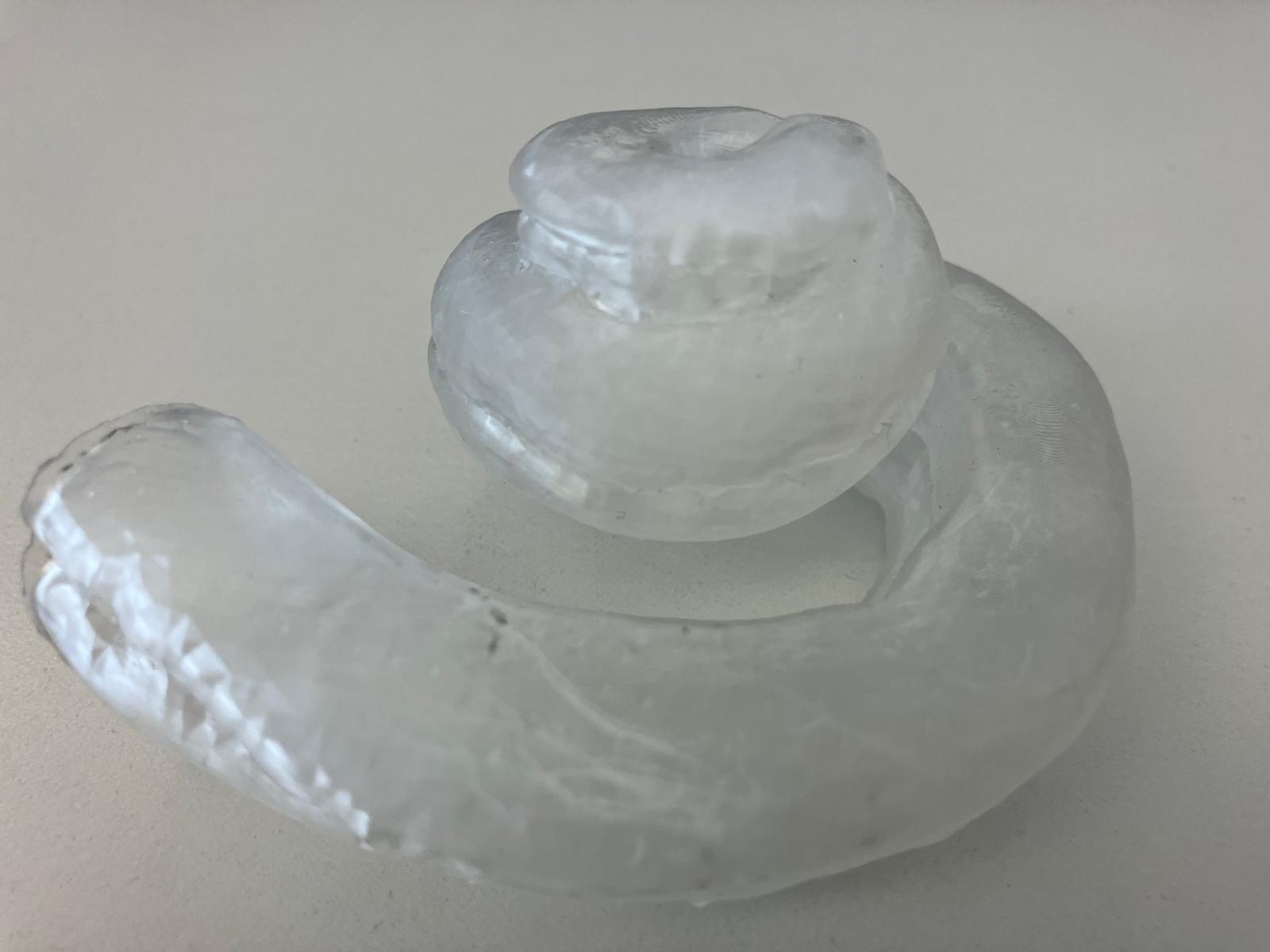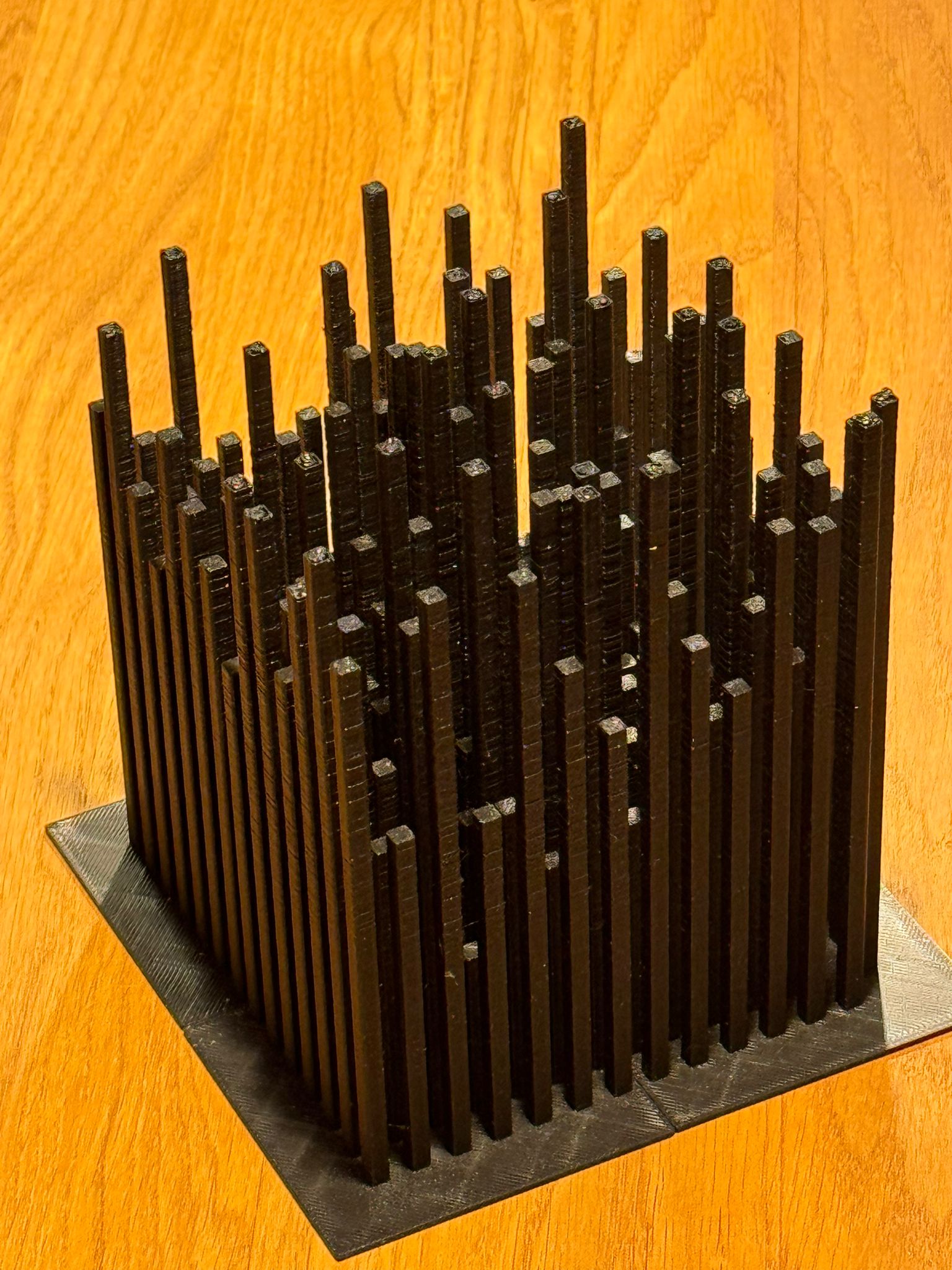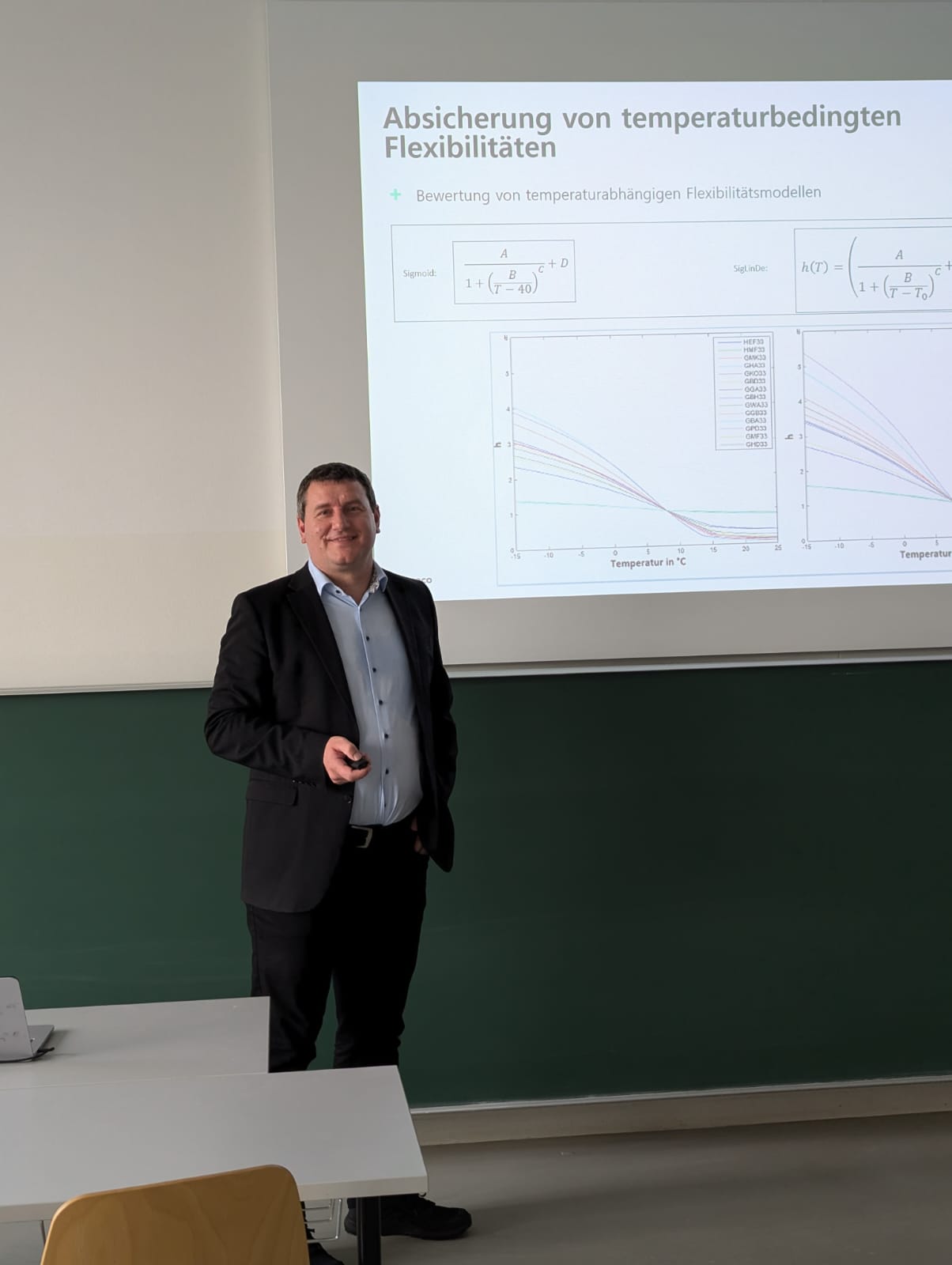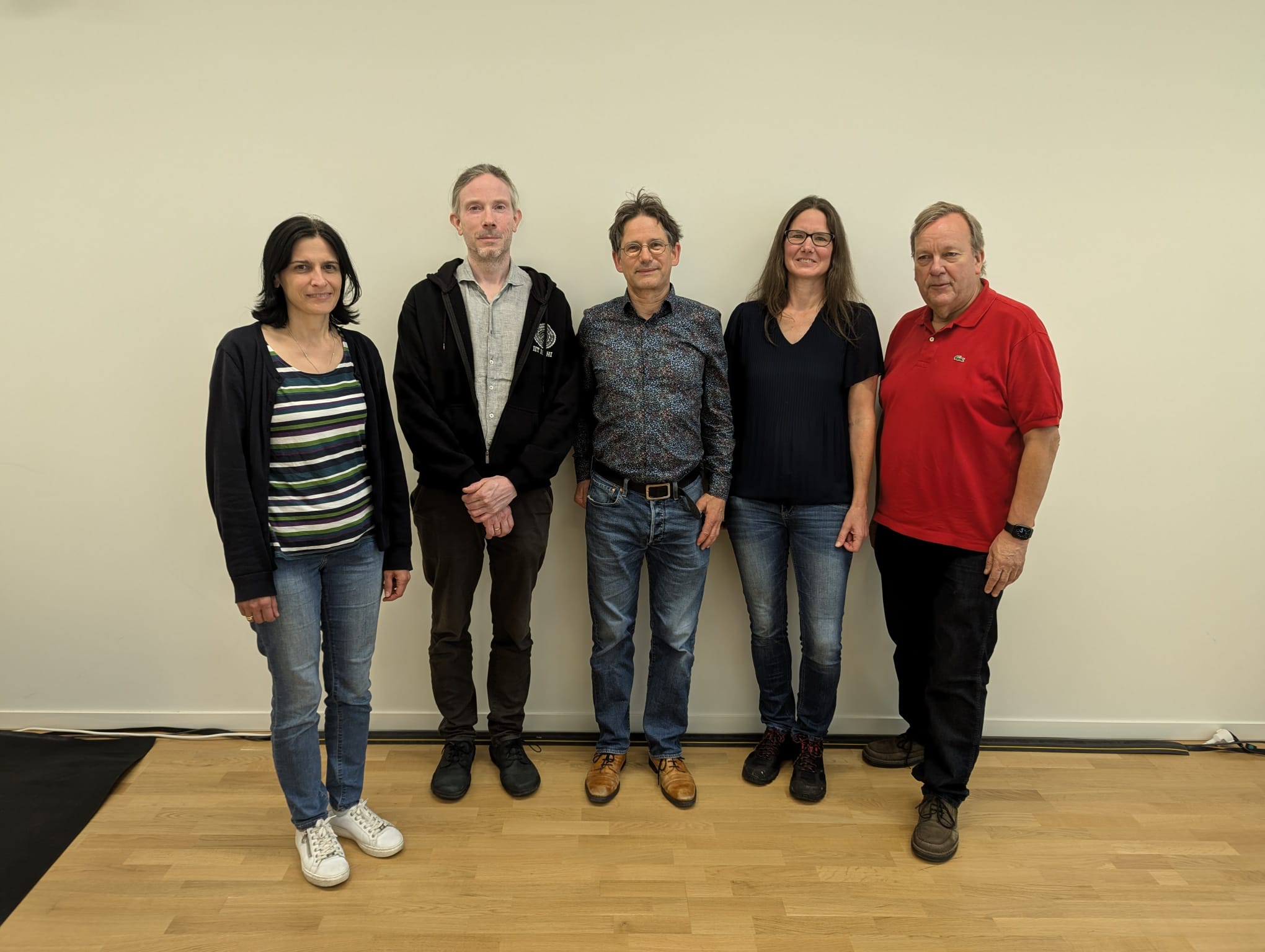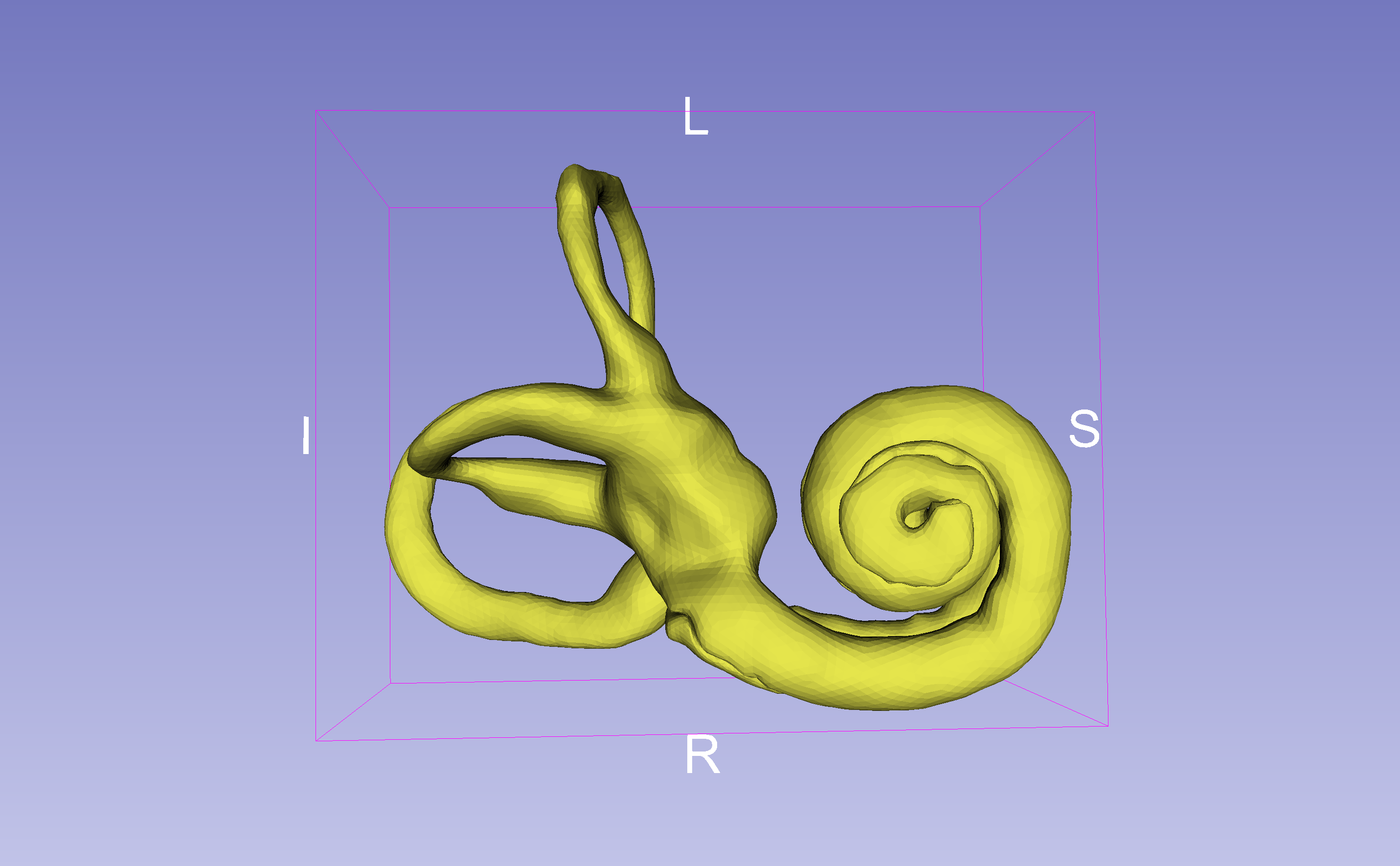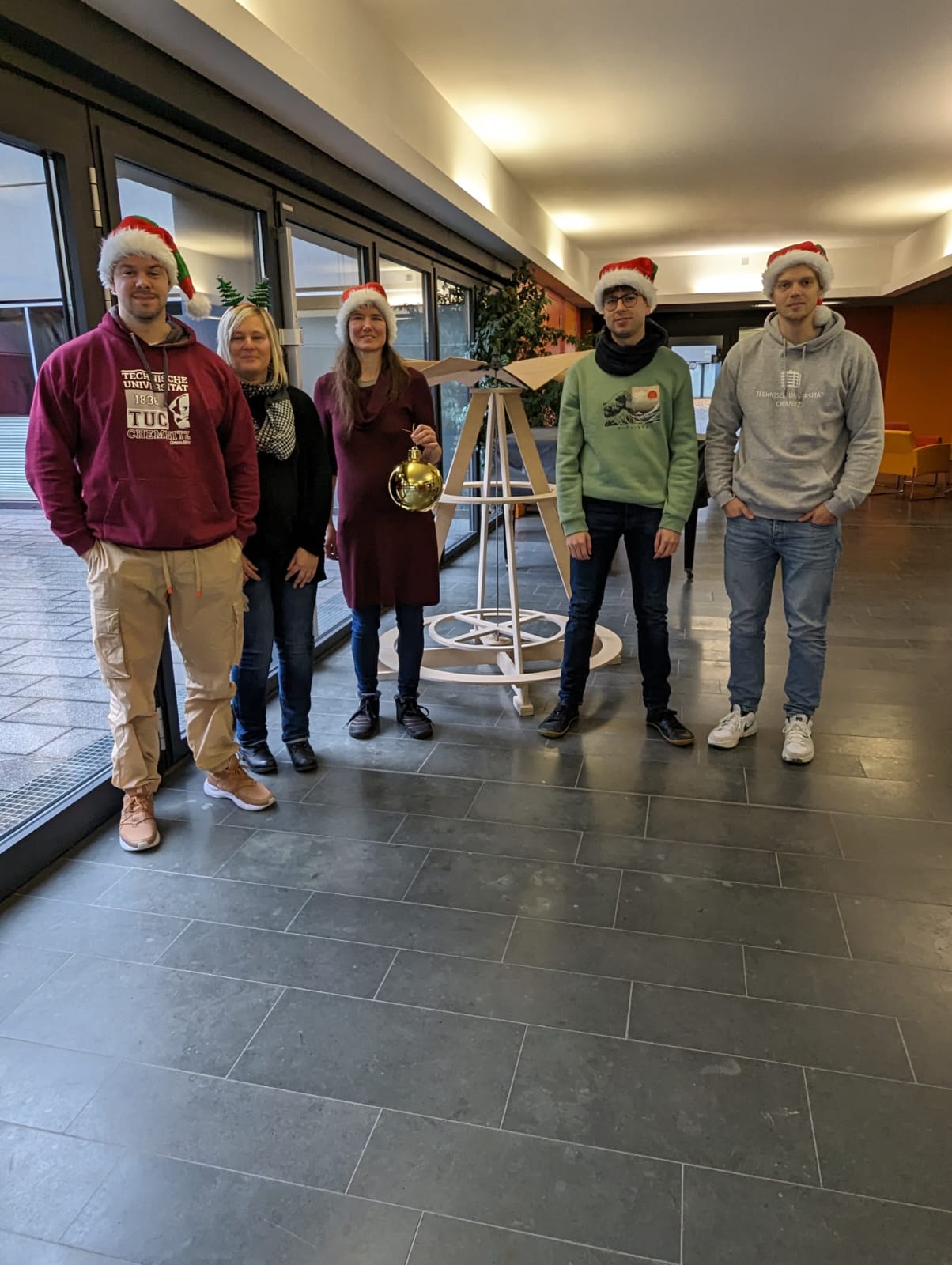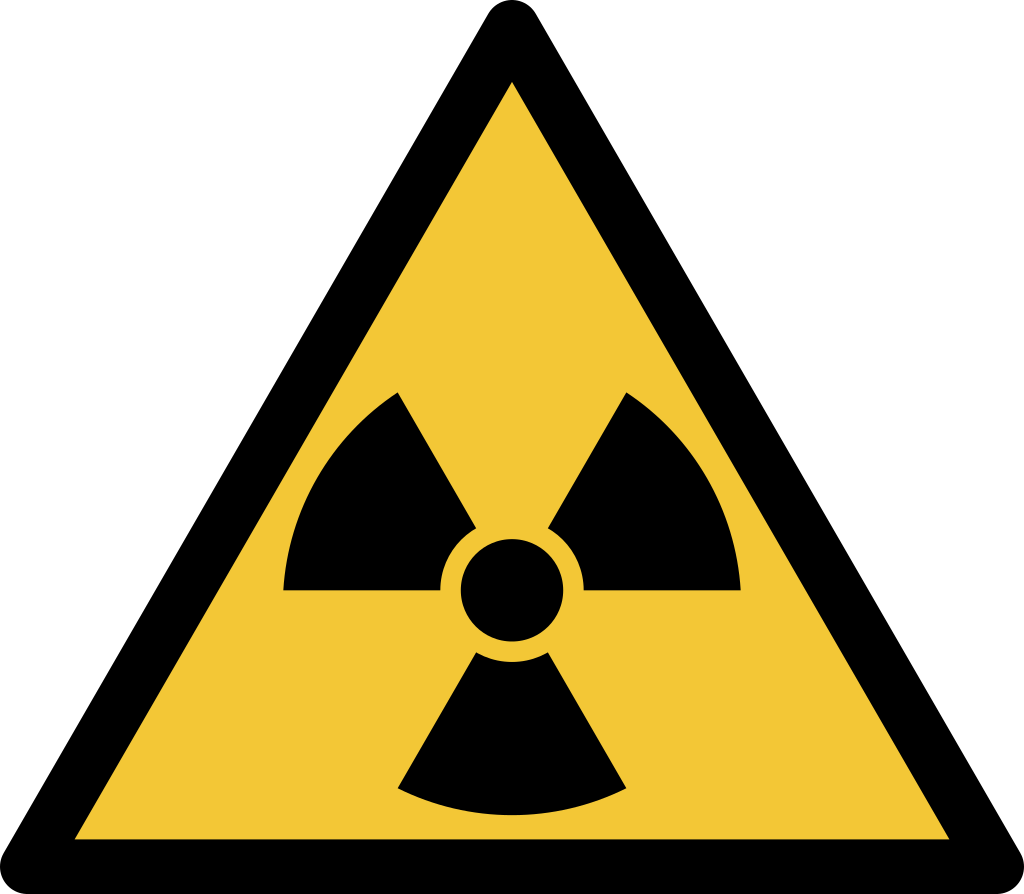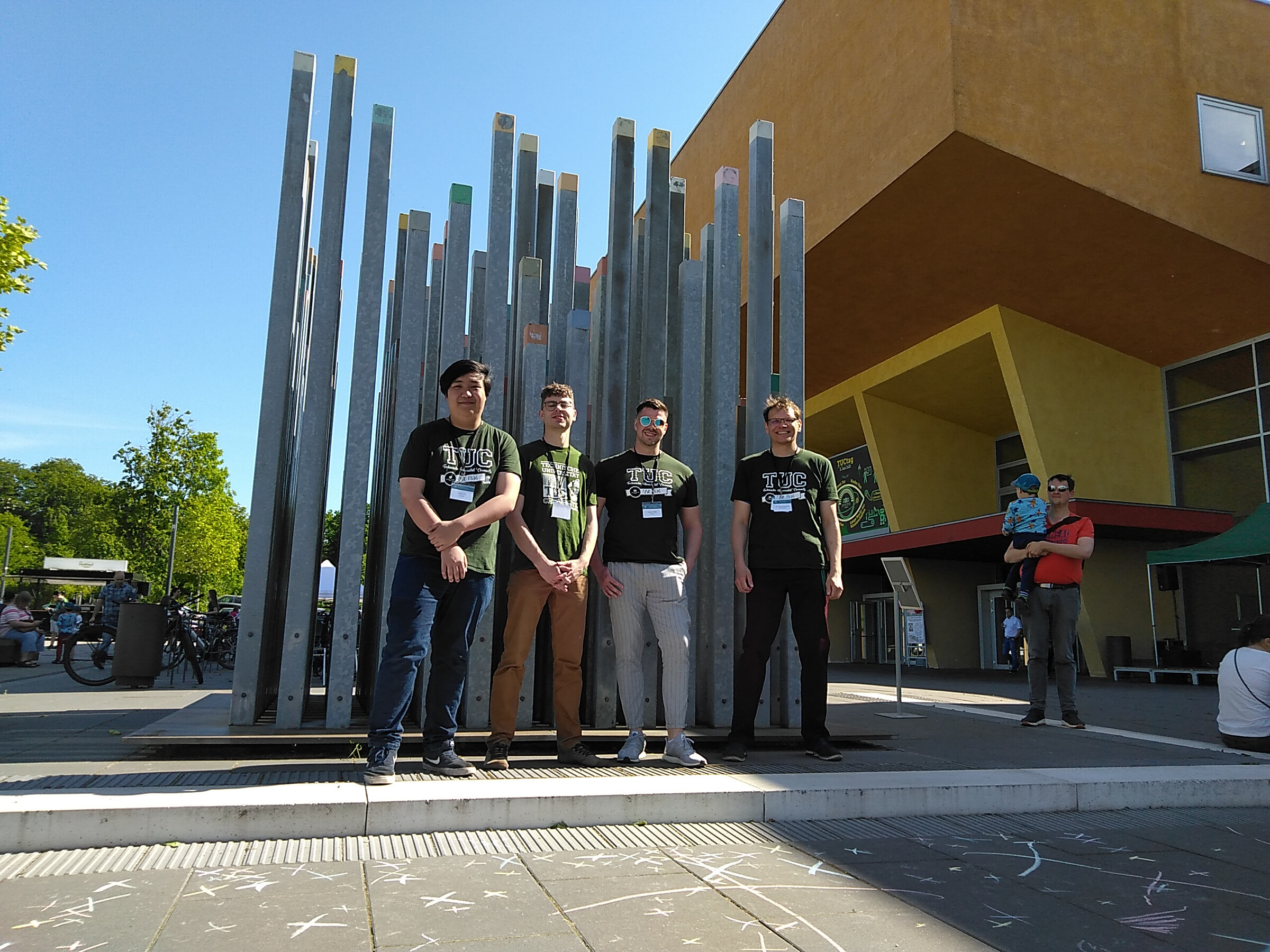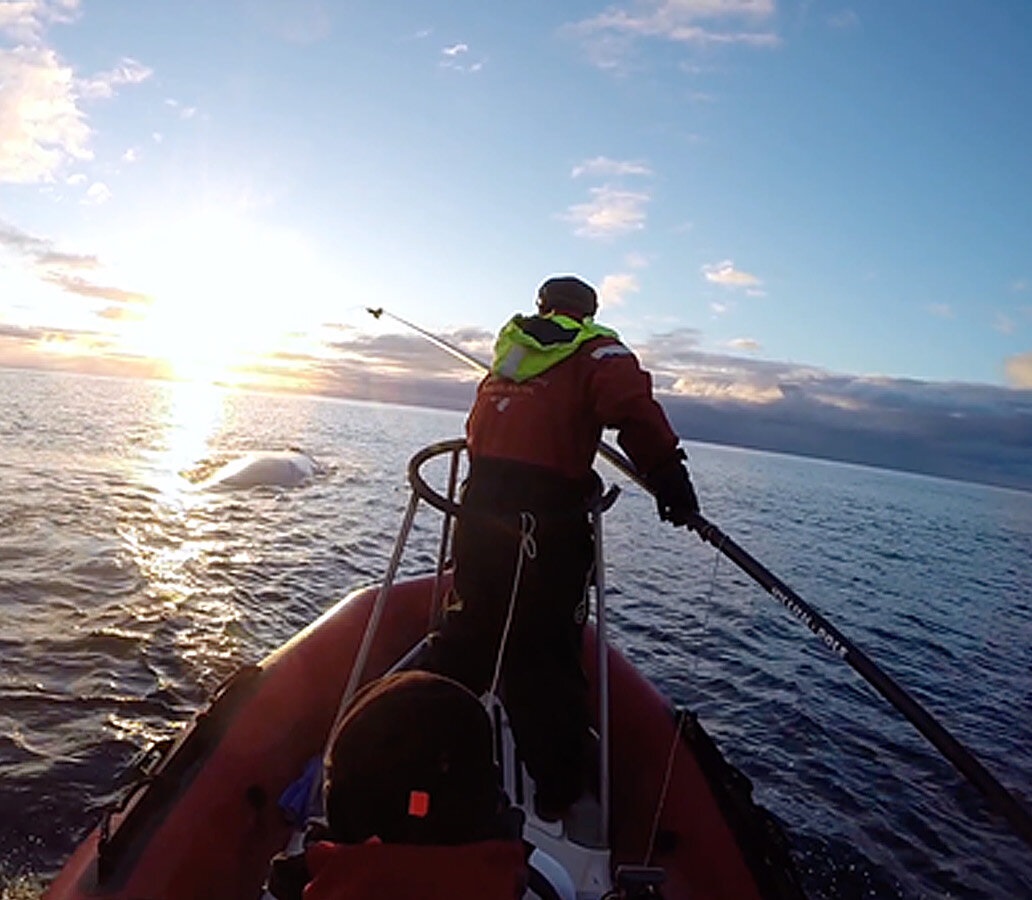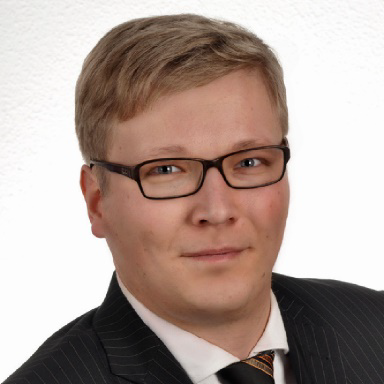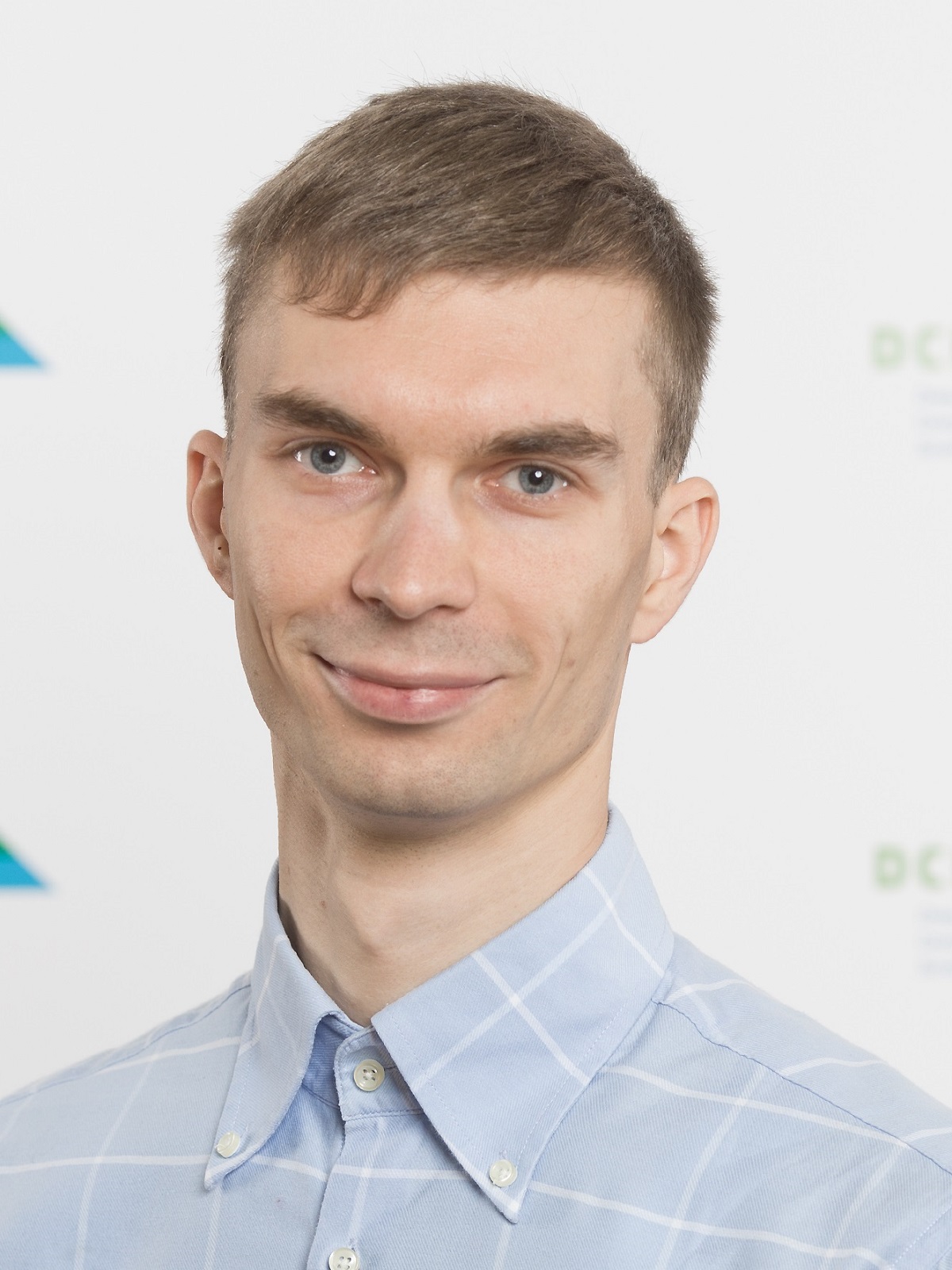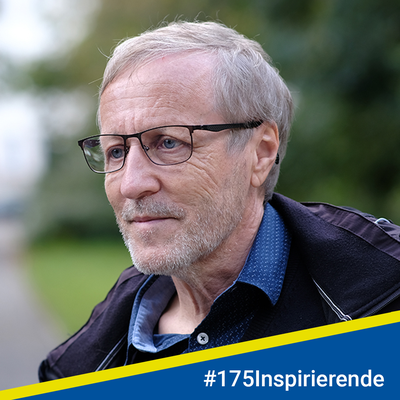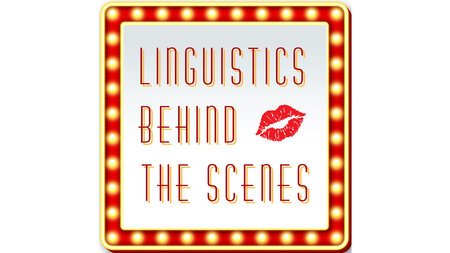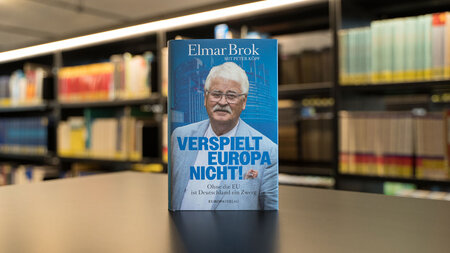News
New Master's Thesis: Investigation of Light Scattering in the Cochlea
We are offering an exciting Master’s thesis on the investigation of light scattering distributions in an enlarged 3D model of the human cochlea. Optical cochlear implants use light as a stimulus instead of electrical signals, providing a promising approach for restoring hearing. The goal of this thesis is to systematically measure light scattering in 3D-printed cochlear models to better understand scattering behavior and derive optimization strategies for future implants.A work of art in miniature
The artwork “Denk- und Wahrnehmungsmodell zum Phänomen der Farbe” by Stefan Nestler from 1998 stands in front of the central lecture hall building of Chemnitz University of Technology; it was realized as a 3D-printed model on a scale of 1:45. The filigree structure consists of a 14 × 14 grid of rods attached to four base plates. Nine imperfections reduce the total number of rods to 187. The model is impressive not only in an aesthetic sense, but also due to its physical properties: it can block waves in certain frequency ranges and is known in the literature as a phononic crystal.On 04.07.2024 Felix Prehl, Dipl.-Math. oec. gave a talk on: Working on and with the energy transition-A field report from the German energy market
The energy market in Germany is a broad and exciting field of work with its price development due to global events, the ongoing energy transition due to the expansion of renewable energies and technical challenges in the heating market. Syneco is a leading municipal energy procurement company based in Munich and Chemnitz and is facing up to these uncertainties. It supports and advises municipal energy supply companies comprehensively with all relevant services for energy procurement, including the provision of market and trading access, market information and energy logistics as well as portfolio and risk management. Speaker: Felix Prehl, graduate in business mathematics from Chemnitz University of Technology and team leader for portfolio management at Syneco.Chemnitzer Förderverein für Physik e.V.
Prof. Dr. Angela Thränhardt was elected treasurer of the Chemnitzer Förderverein für Physik e.V.. Special thanks to the previous treasurer Dr. Eckart Fromm. Further newly elected board members are Prof. Dr. Ulrich T. Schwarz as Chairman, Prof. Dr. Georgeta Salvan and Prof. Dr. Martin Weigel as his deputies and Prof. Dr. Dietrich Zahn as a member of the Scientific Advisory Board. The new team is working on great projects to promote and popularize physics.Manifesto of Women4Quantum
The Women4Quantum manifesto aims to improve the gender balance in the field of AMO physics (quantum optics, atomic and molecular physics), quantum many-body physics and quantum information and to make the professional environment more diverse. It was developed by Women for Quantum (W4Q), a group of female physics professors currently based mainly in Europe, but also in Japan, working in the relevant field. All of them are tenured and have more than 10 years of postdoctoral experience. Prof. Dr. Angela Thränhardt is one of the first supporters of the manifesto.Physics in Chemnitz over the years
The Institute of Physics is celebrating its 70th anniversary this year. Reason enough to take a glance at the Institute's past and take a closer look at the history of physics at Chemnitz University of Technology: The Institute of Physics was established at the Hochschule für Maschienenbau(HfM) in 1954, just one year after the HfM was founded in 1953. As a result of the 3rd university reform in 1963, the Institute became the Physics/Electronic Components Section (PEB). From the fall of 1963, it trained physicists at the TH Karl-Marx-Stadt. In 1974/1975, the Weinhold Building was completed, which was to become the home of the Institutes of Physics and Electrical Engineering for the next 33 years. In 1992/93, a total of 10 new professorships were added to the existing 7 physics professorships as part of the relaunch of the universities in Saxony. In 2008, the time had come and the physics department moved into its new institute building. This year also marked the start of the staged Bachelor's and Master's degree in physics. In 2010, the Bachelor's/Master's degree course in Sensorik und kognitive Psychologie was launched, which remains particularly popular to this day and is the course with the largest number of students at the Institute of Physics.Publication: Angle-dependent light scattering in tissue phantoms for the case of thin bone layers with predominant forward scattering
Authors: T. Witke, E. Kuhn, F. Teichert, C. Goßler, A. Thränhardt, U. Schwarz
Journal: Journal of Biophotonics (2023)
The cochlea forms a key element of the human auditory system in the temporal bone. Damage to the cochlea continues to produce significant impairment for sensory reception of environmental stimuli. To improve this impairment, the optical cochlear implant forms a new research approach. A prerequisite for this method is to understand how light propagation, as well as scattering, reflection and absorption, takes place within the cochlea. We offer a method to study the light distribution in the human cochlea through phantom materials which have the objective to mimic the optical behaviour of bone and Monte‐Carlo simulations. The calculation of an angular distribution after scattering requires a phase function. Often approximate functions like Henyey‐Greenstein, two‐term Henyey‐Greenstein or Legendre polynomial decompositions are used as phase function. An alternative is to exactly calculate a Mie distribution for each scattering event. This method provides a better fit to the data measured in this work.
Physics Colloquium
Christian Kunze will give a lecture on the remediation of Wismut legacies and other legacies with radioactivity on 19.10.2023 as part of the physics colloquium.- Lecturer: Dr. Christian Kunze (Geschäftsführer der IAF Radioökologie GmbH)
- Title: „Environmental Remediation of Uranium Mining and Processing Sites“
- Time: thursday, 19.10.2023, 15:30
- Room: 2/N013 (neu: C10.013), Zentrales Hörsaalgebäude, Reichenhainer Str. 70
TUC Day
The „TUC day“ invites you to discover, participate and marvel. From the „Open Day“ to the Children's University and the „Long Night of Science“ to the International Alumni Meeting: On 3 June 2023, you can experience the TU Chemnitz in many facets.At the artwork in front of the central lecture hall building, we present the physical effect of a band gap by means of sound irradiation.
Physics Colloquium
What noise pollution does to the oceans: The Physics Colloquium at TU Chemnitz on 31 May 2023 is dedicated to underwater sound and its effects on the environment.- Lecturer: Dr. Jeff Schnitzler (Tierärztliche Hochschule Hannover Stiftung)
- Title: „Was Lärmverschmutzung mit den Meeren macht“
- Time: wednesday, 31.05.2023, 11:15
- Room: 2/N013 (neu: C10.013), Zentrales Hörsaalgebäude, Reichenhainer Str. 70
Publication: Simultaneous occurrence and compensating effects of multi-type disorder in two-dimensional photonic structures
Authors: D. Röhlig, E. Kuhn, A. Thränhardt, T. Blaudeck
Journal: Nano Select 4, 368 (2023)
Finite-difference time-domain (FDTD) simulations of the transmission spectra of planar small-footprint photonic components with up to four types of morphological disorder as a materials parameter are performed with the aim to identify the individual contributions of the type of disorder to the spectral features. Our work shows that several types of disorder as well as the mixing two types of disorder can be used for an intentional adaptation of the spectral transmission characteristics and may be considered in the design of small-footprint photonic components such as scatterers, diffusers, and waveguides.
Praxis Seminar Computational Science
- Lecturer: Dr. Karsten Schwalbe (FusionSystemsGmbH)
- Title: „Maschinelles Sehen und Verstehen – Meine Arbeit bei FusionSystems“
- Time: monday, 15.05.2023, 13:45
- Room: C25.065, Weinholdbau, Reichenhainer Str. 70
Lecture „Geschichte der Physik“ (in german)
How did science work in the Middle Ages? Did Newton really discover gravity when an apple fell on his head? How did the interpretations of quantum mechanics develop and become accepted? Hans-Reinhard Berger will once again read the lecture „Geschichte der Physik“ (in german) on these and other questions on the development of physical theories in the upcoming summer semester 2023.- Time: every friday, 13:45 - 15:15
- Room: 2/N013 (new: C10.013)
- Lecturer: PD Dr. Hans-Reinhard Berger
Publication: Microreflectance spectroscopy – targeting the near order of printed nanostructures
Authors: G. Manoharan, A. Willert, E. Kuhn, D. Röhlig, A. Thränhardt, T. Otto, T. Blaudeck
Journal: GIT Labor-Fachzeitschrift, 11-12, 29 (2022)
Optical spectroscopy methods in the ultraviolet, visible and near infrared spectral ranges have proven to be powerful methods for structural analysis. This article describes how small technical advancements of a microreflectance spectroscopy setup in terms of focusing in different geometric planes and orientations of the sample can help to shed light, in the proverbial sense, on the internal morphology and light scattering properties of a new class of three-dimensional, liquid-processed, colloidal, nanostructured photonic objects.
TUC explains Nobel Prizes
This year, the Nobel Prize in Physics was awarded for experiments with entangled photons and pioneering work in the field of quantum information. In the field of chemistry, the development of click chemistry and its application in living cells was awarded. What are these topics about and why are they so important for the natural sciences? These and other questions will be answered at the event.- Time: 13th december 2022, 17:00 - 18:15
- Room: University Library, Room „IdeenReich“ (main floor)
- Presenters: Angela Thränhardt, Martin Weigel, Martin Breugst
Fabian Teichert receives the 2022 Teaching Award for Young Scientists
The teaching award for young academics who teach illustrates that Chemnitz University of Technology recognises research and teaching as equally important areas, even in the qualification phase, and appreciates the commitment of young academics in teaching. The teaching prize is also intended as a career incentive to commit to qualitative university teaching and is awarded for the successful combination of research and teaching.Hans-Reinhard Berger is one of the 175 inspiring people of the DPG
On 175 days in the anniversary year of the DPG, interesting physicists will be presented who have an inspiring effect on other people or even on society as a whole through their field of activity, their commitment or their thoughts.„Physik ist wie ein Bachsches Oratorium, bei dem man von unerwarteten, letztlich aber den Inhalt unterstützenden Harmonien überrascht wird.“
Women in Data Science Conference at 19th Mai 2022
Angela Thränhardt, Martina Hentschel and Janett Prehl attend the Women in Data Science Conference at TU Chemnitz. In a poster, they present how data-driven physics is used for simulation techniques in computational physics at TU Chemnitz.Theory group seminar will take place in presence
Our joined theory group seminar will take place in presence since wednesday, 25th may 2022. Interested parties are cordially invited.- Time: 9:15 bis 10:45
- Room: MAIN conference room in the ground floor
Publication: Disorder explains dual-band reflection spectrum inspherical colloidal photonic supraparticle assemblies
Authors: E. Kuhn, D. Röhlig, E. Sowade, D. Rittrich, A. Willert, S. E. Schulz, R. R. Baumann, A. Thränhardt, T. Blaudeck
Journal: Nano Select 2, 12, 2461 (2021)
Simulations of the reflection spectrum to calculate their photonic and opticalproperties for different parameter constellations are compared with experimental studies by microreflectance spectroscopy on supraparticle systems fabricated by inkjet in-flight deposition, proving the existence of a dual-band reflection spectrumoriginating from the supraparticle system.
This even got us on the front page. More informations can be found in this press release of TUC.

